We can't find the internet
Attempting to reconnect
Something went wrong!
Hang in there while we get back on track
Phoenix Framework
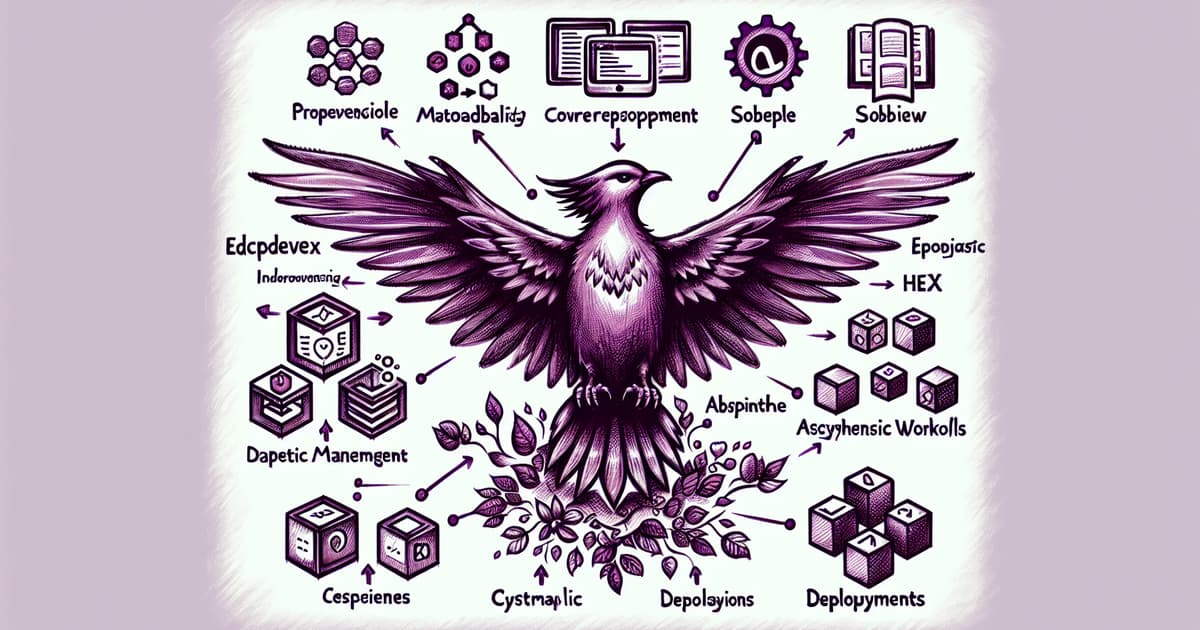
The Phoenix framework stands out in the Elixir ecosystem for its robust capabilities in web development, supported by comprehensive documentation and a supportive community. Developers have shared experiences working on commercial projects with Phoenix and LiveView, emphasizing the ease of integrating complex UI elements and ensuring real-time updates. Recent advancements include using Rust for performance improvements and introducing LiveView hooks for external libraries like SortableJS, enhancing UI customization. Furthermore, Phoenix's efficient handling of associations in Ecto simplifies relational management in applications. Concurrently, developers have noted the benefits of maintaining modular codebases and optimizing live updates, contributing to a streamlined development process.
A diverse set of tools such as Hex, Sobelow, and async workflows in LiveView attribute to Phoenix's extensive ecosystem. The introduction of libraries like Absinthe for GraphQL and components for handling upgrades and modifications highlights Phoenix's adaptability. Additionally, Phoenix's integration with tools like Fly.io leverages global distribution, facilitating scalable deployments. Real-time functionalities like LiveView Uploads further augment its dynamic capabilities, making Phoenix a versatile framework for modern web application development.

Introduction to LiveView in Phoenix for Rich User Interactions
Andrew Forward gives an engaging talk on utilizing LiveView within the Phoenix Elixir framework to create rich client-side experiences directly from the server, thus minimizing the need for JavaScript.

Enhancing Real-Time Interactivity with LiveView and User Experience Design
Zack Kayser and Beau Heubach, from Gaslight, discuss the integration of user experience (UX) principles with Phoenix LiveView to deliver seamless real-time features in web applications.

Understanding Observability with Elixir Telemetry
Ethan Gunderson presents an overview of using telemetry for observability in Elixir applications, particularly on how it can be employed to better understand and manage production systems.

Exploring the Underlying Network of Phoenix Applications
Mat Trudel presents an in-depth analysis of the network and process management architectures underpinning Phoenix applications, particularly the supervision and process models within the BEAM.

Understanding Networking on the BEAM with Elixir
Andrea Leopardi presents insights into how the BEAM's architecture is particularly suited for network applications. He discusses the handling of TCP connections and the design patterns for building scalable and fault-tolerant systems.

Exploring Machine Learning in Elixir with a Recommendation Engine
Andrew Forward discusses the potential for using Elixir to build a recommendation engine for a gifting platform. He explores traditional machine learning algorithms such as KNearestNeighbour, (Naive) Bayes, and KMeans, and introduces the Elixir library 'scholar' for implementing these algorithms.

Automatic API Documentation Using Connect the Docs in Elixir
Natalie Perpepaj & Geoff Smith introduced Connect the Docs, a tool to automatically generate web API documentation from unit tests.
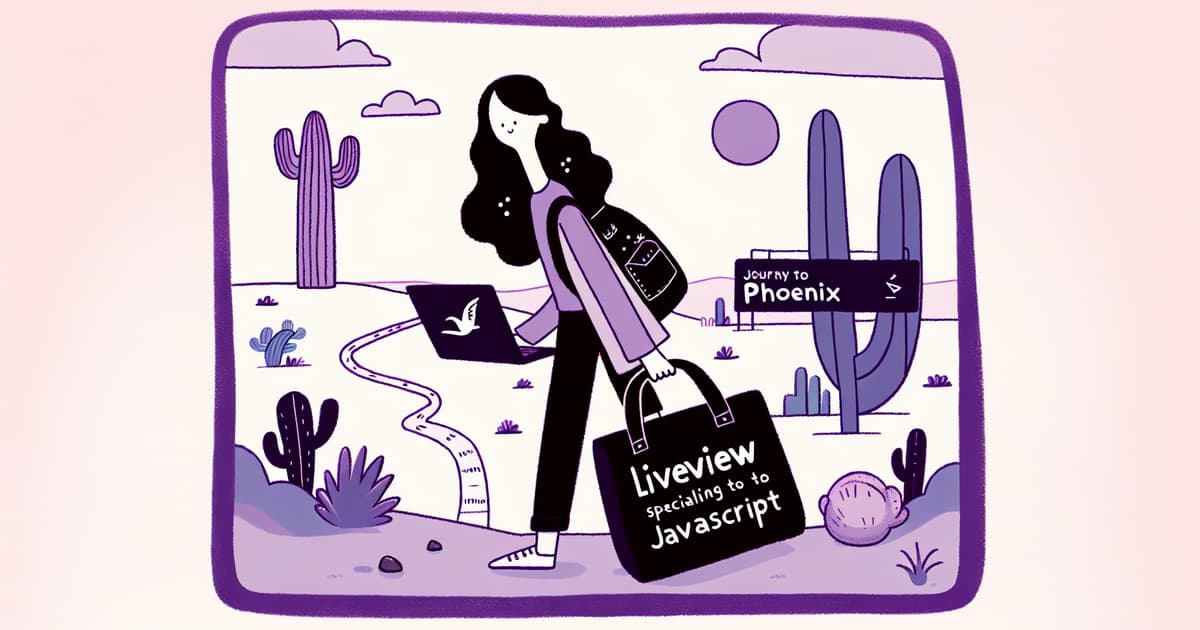
Exploring Web Development with Elixir: A Javascripter's Journey
Roger Roelofs discusses his evolution as a web developer and his experience moving from JavaScript to Elixir's Phoenix and LiveView.

Implementation Challenges of an Interview Scheduler Using Phoenix LiveView
Karoline Lende shares her experiences as a new Elixir developer in creating an interview availability scheduler with Phoenix LiveView. She discusses the initial roadblocks, the iterative problem-solving process with her team, and the successful deployment of the feature.

Fedecks: A New Tool for Nerves-Phoenix Communication
Paul Wilson introduces 'Fedecks', a new tool designed to facilitate communication between Nerves devices and a Phoenix server using WebSockets.

Adoption and Impact of Elixir at Helvetia Insurance
André Graf discusses the adoption of Elixir at Helvetia Insurance to replace complex Jenkins pipelines, leading to the implementation of self-services for their streaming and API platforms.

Interfacing with Industrial Devices using Elixir
Aldebaran Alonso discusses the challenge startups face when developing products for the industrial environment, particularly in terms of communicating with industrial devices. He introduces industrial communication protocols and shares experiences and workflow in adopting these protocols within the Elixir ecosystem, with a focus on Modbus TCP and OPC UA, including a demonstration.

Leveraging Elixir & Phoenix for Building Software in Auroville
Shankar Dhanasekaran speaks about using Elixir and Phoenix to create software for Auroville, a city of 50,000 people. He emphasizes the benefits of Elixir and Phoenix in managing complex, multi-service domains, and shares their journey of moving away from Drupal to Elixir, the adoption challenges faced, and the productivity gains. The talk also highlights the future potential of Elixir in the context of Auroville's development, such as the potential for cloud farming and machine learning.

Advancements and Capabilities of LiveView 1.0
Chris McCord discusses the evolution of LiveView into a full-fledged application development tool capable of complex operations like building Spotify-like apps.

Optimizing Phoenix Channels Performance with Erlang Garbage Collection
Erik Guzman discusses memory consumption issues with long-lived Phoenix Channels and how to mitigate them using the ERL_FULLSWEEP_AFTER setting.

Introducing ECSx for Game Development with Elixir
Andrew Berrien introduces 'ECSx', a new framework for developing real-time games and simulations in Elixir, leveraging OTP's strengths.
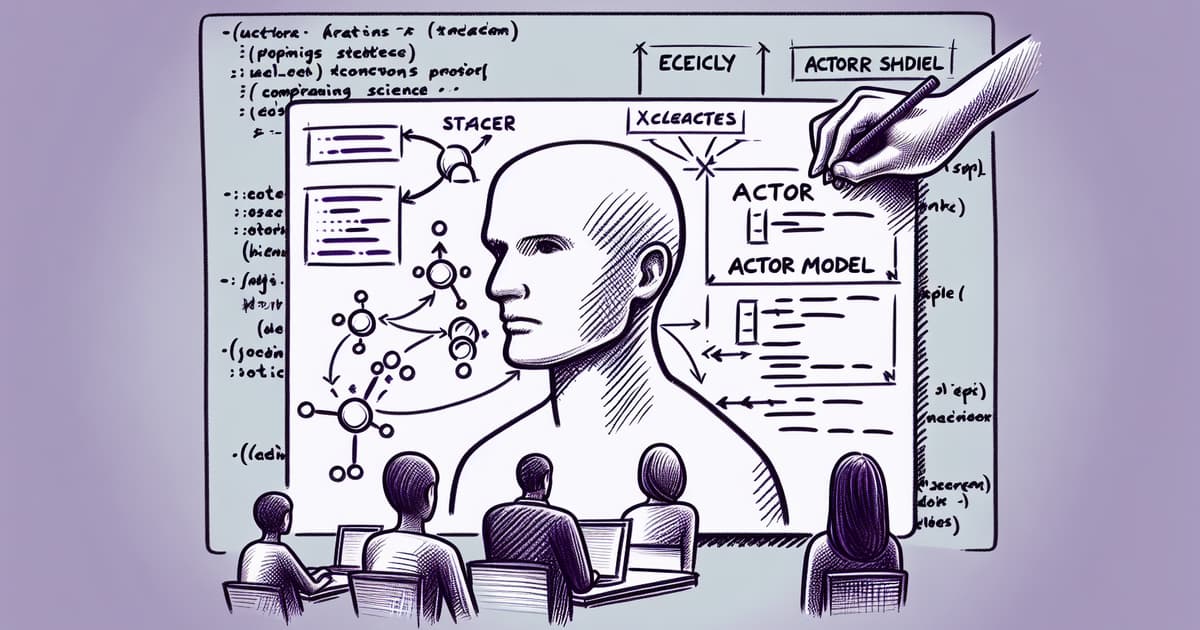
Exploring Concurrency in Elixir with The Actor Model
Lars Wikman provides an in-depth look at The Actor Model as it pertains to Elixir and the underlying BEAM VM, debunking the terminology's use in Elixir while covering processes, message passing, GenServers, and architectural patterns.

Understanding How Phoenix Updates `:page_title`
German Velasco explores how the `:page_title` assign works in Phoenix, describing it as the only dynamic assign in a layout and demonstrating code spelunking to understand its implementation.

Securing Software with Elixir: Business and Technical Insights
Michael Lubas discusses the importance of security in Elixir software development, including how the language's design promotes safe concurrency and prevents common vulnerabilities like data races.

Implementing Twitter-style Relationships in Elixir/Phoenix with Ecto
Meraj Molla examines the process of creating self-referential associations in Elixir, focusing on follower-following relationships similar to those on Twitter.

Testing Read-Only External Database Connections in Phoenix
Peter Ullrich provides a detailed guide on how to test an external, read-only database connection in Phoenix. He suggests creating a new Ecto.Repo for the external database connection and configuring it to be read-only. He also provides steps for creating migrations and using a Factory Delegator to populate the test database.

Elixir Performance Optimization Techniques
In this presentation, Tyler Young discusses various performance enhancement techniques within the Elixir programming language. He provided insights into optimizing Elixir applications, with a focus on CPU performance improvement tactics.

Exploring Phoenix LiveView's Async Operations
Mark Ericksen explores how to use Phoenix LiveView's new async operations feature in his article "Abusing LiveView's new Async Assigns Feature." He discusses starting and stopping async tasks, handling success and failure states, and canceling running tasks. The article showcases the versatility and power of async operations in Phoenix LiveView.

Ensuring Unique Data Entries in Phoenix Applications
George Arrowsmith explains in his article "Foolproof uniqueness validations in Phoenix with Ecto" how to validate the uniqueness of data in a Phoenix app using the Ecto.Changeset module. He discusses the limitations of the validates_uniqueness_of validator in Rails and introduces the use of unsafe_validate_unique and unique_constraint functions in Ecto for a more secure and user-friendly validation process.

Release of Bandit and Thousand Island 1.0.0
Mat Trudel announces that Bandit and Thousand Island are both reaching version 1.0.0 today, after almost four years of development. Mat reflects on the progress made and highlights exciting future plans, thanking the community for their contributions and support.

Continuation of LiveView Native's Journey Toward Version 0.2
Brian Cardarella discusses the challenges faced in representing SwiftUI's modifier system in LiveView Native and the solutions they have come up with. They have advocated for changes in both Phoenix and Elixir to improve the integration and are working towards better dev ergonomics and format implicit layout rendering in LiveView.

Discovering the Hidden Value of Elixir Beyond Functional Programming
Owen Bickford discusses why Elixir is his preferred programming language, highlighting its functional paradigm, concurrency, and fault tolerance. He also delves into a lesser talked about feature of Elixir that allows it to solve problems previously considered unfit for the language and the BEAM.

Elixir's Flexibility in the Monolith vs. Microservices Debate
Elixir offers a simple way to avoid the monolith vs. microservices debate by providing clear modular boundaries in code and easy extraction of modules to separate services if needed. The author explains why microservices are often overused and emphasizes the importance of building modular software and investing in DevOps.

The Comprehensive Capabilities of Elixir and Phoenix
Jason Stiebs explains why Elixir and Phoenix are an excellent choice for developers, highlighting the various features and advantages of the language and framework. Learn about the built-in support for concurrency, distribution, RPC, low resource usage, and more!

Enhancing LiveView with JavaScript for Dynamic User Experiences
In this video, Chris Nelson discusses the benefits of using LiveView in Elixir development, along with complex Javascript integration methods. It addresses scenarios for integrating Javascript, maintaining LiveView productivity, and fostering a better developer experience. It discusses using Custom HTML Elements and two libraries, `LiveElements` and `LiveState`.

Organizing Phoenix Application Code through Context Structuring
Ahmed Mansour discusses the technique of structuring Phoenix contexts by splitting them into layers, allowing for better organization and reduced complexity. This approach helps create consistent and predictable code, making the context a calmer place to work with.

Implementing an Elixir-Based Distributed Router for GDPR Compliance
De Wet Blomerus shares the story of building a globally distributed router using Elixir to enhance latency, hold on to connections, and route traffic to the correct region for GDPR compliance.

Building an AI Fitness Trainer with Elixir
Mark Ericksen created an AI Personal Fitness Trainer named “Max” in just 2 days. It quickly became his new workout buddy and reignited his fitness excitement!

Building a Database Interface and PostgreSQL Proxy Using Elixir
Michael St Clair recently showcased how he utilized Elixir, Ecto, and LiveView to build a database GUI and discussed the usage of gen_tcp to create a Postgres proxy, along with the role of binaries in the Postgres message protocol context.

Understanding ETL Processes Using Oban in Elixir
Brandon Bennett explores ETL with Oban, a tool for creating data transformation workflows. He provides an example of using Oban to generate stats for superheroes and create a daily digest to determine the best superhero.

Data Validation Techniques in Phoenix for Elixir
David Sulc explores how to avoid bad data and validate data at the boundary of a Phoenix application for Elixir. This post covers techniques such as pattern matching and guards to ensure the data remains clean.

Building Scalable Machine Learning Applications with Elixir
Sean Moriarity shows how easy it is to build machine-learning applications with Elixir, especially in a few hours, to build a simple enriched newsfeed.

Applying DDD for Improved Phoenix Contexts
German Velasco explores the confusion around using Phoenix contexts in applications and introduces the use of domain-driven design (DDD) concepts to create more effective Phoenix contexts.

Introduction to the Permit authorization library for Elixir Phoenix apps
Michał Buszkiewicz explores the features of the Permit library for managing resource authorization in Phoenix, LiveView, and Ecto. Discover how Permit automatically converts authorization conditions to Ecto queries and provides a mechanism for running them in controller and LiveView actions.

Creating Simple SVG Sparklines
Alex Plescan writes about how to create easy SVG sparklines, compact and simple charts that show a trend without the nitty-gritty. He explains the process of handcrafting the SVG and scaling the vector graphics to create beautiful sparklines.

Implementing Magic Link Authentication in Phoenix LiveView
John Elm Labs shows you how to add magic link authentication to a Phoenix LiveView App. This step-by-step guide will help you implement this popular sign-in flow easily and securely.

Building Conversational Web APIs with Phoenix Channels
Nicholas Scheurich explores the possibilities of using Phoenix Channels to build a stateful, Channels-based web interface that reduces network traffic, eliminates data overhead, and provides a unified mechanism for establishing application connectivity to browsers, mobile apps, and hardware devices.
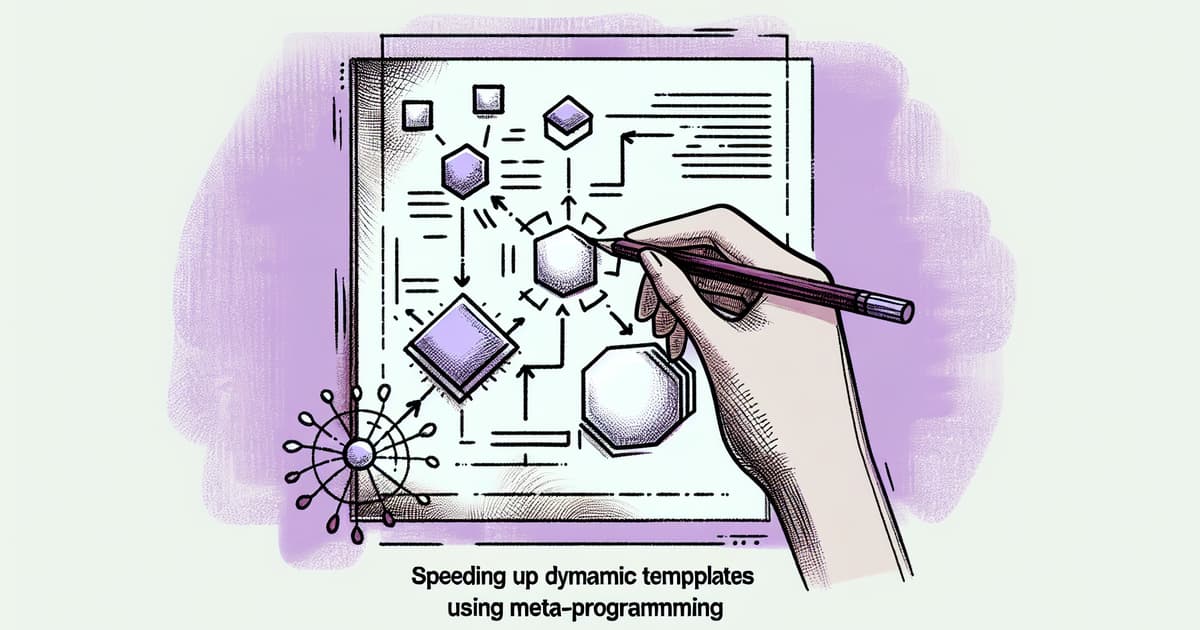
Optimizing Phoenix Template Rendering through Meta-programming
Andrew Selder presents at ElixirConf 2023 on how to speed up dynamic templates using meta-programming, achieving compiled-template-level performance for arbitrary templates with significant improvements over the old method.
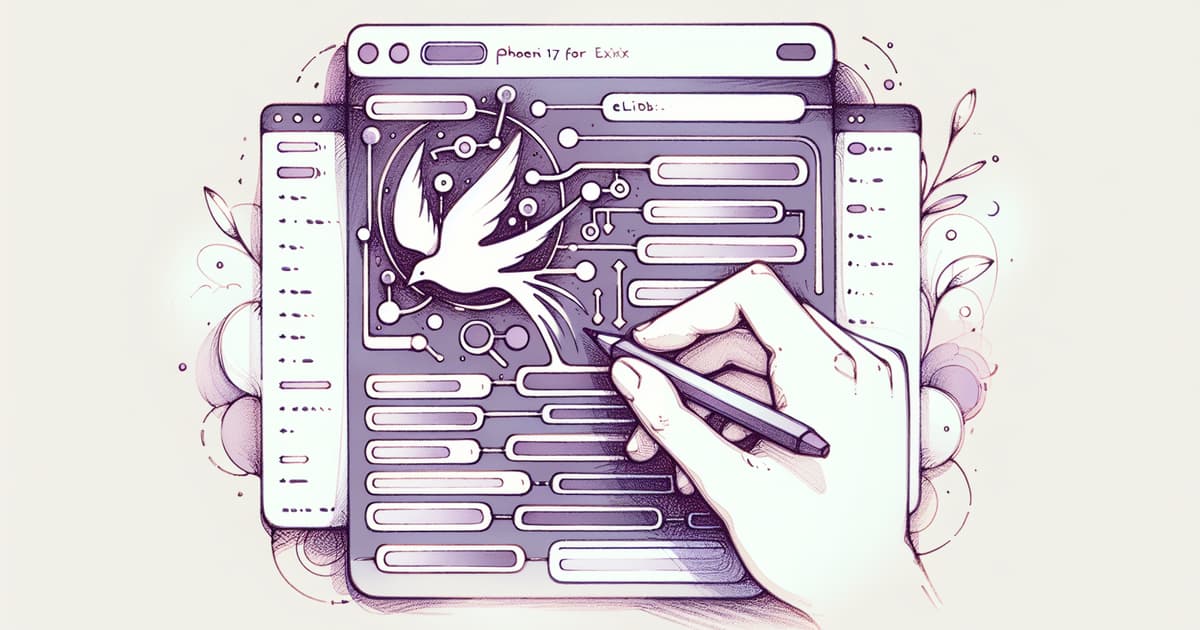
Editing Forms Within Modals in Phoenix 1.7
Adam Lancaster shares a tutorial on how to edit a form in a modal using Phoenix 1.7 for Elixir. He provides step-by-step instructions and code examples, making it easy to follow along and implement in your own applications.

Introduction of LangChain Library for Elixir
Mark Ericksen created an Elixir LangChain library called “langchain” on Hex.pm. LangChain is a framework designed to simplify the creation of applications using large language models (LLMs).

Using Sobelow for Securing Elixir Applications
Michael Lubas provides a guide for effectively using Sobelow, the best static code analysis security tool for Elixir and Phoenix. He covers project planning, classifying findings, and using Sobelow effectively.

Exploring Elixir's Unique Observability Features
Lars Wikman shares insights on the observability features unique to the BEAM runtime and how Elixir has excellent tools for monitoring and debugging applications.

Creating Custom Data Visualizations in LiveView with SVG
Meks McClure & Mark Keele share their process of building interactive charts in Elixir, including evaluating existing libraries, hand rolling SVG charts, using LiveView and Tailwind, and adding interactivity and data appending with Phoenix streams.

Implementing Graceful Shutdown in Phoenix Applications
Jason Axelson provides a quick guide for running a graceful shutdown process in your Phoenix application, ensuring clean process termination and minimizing downtime during deployments. When a process ends it is important that you clean up what remains of that process or things will get messy.

Introduction to LiveViewNative for Cross-Platform Development
Brooklin Myers delves into the powerful combination of Elixir and LiveView as they explore LiveViewNative application development for Android, iOS, and beyond.
© HashMerge 2025